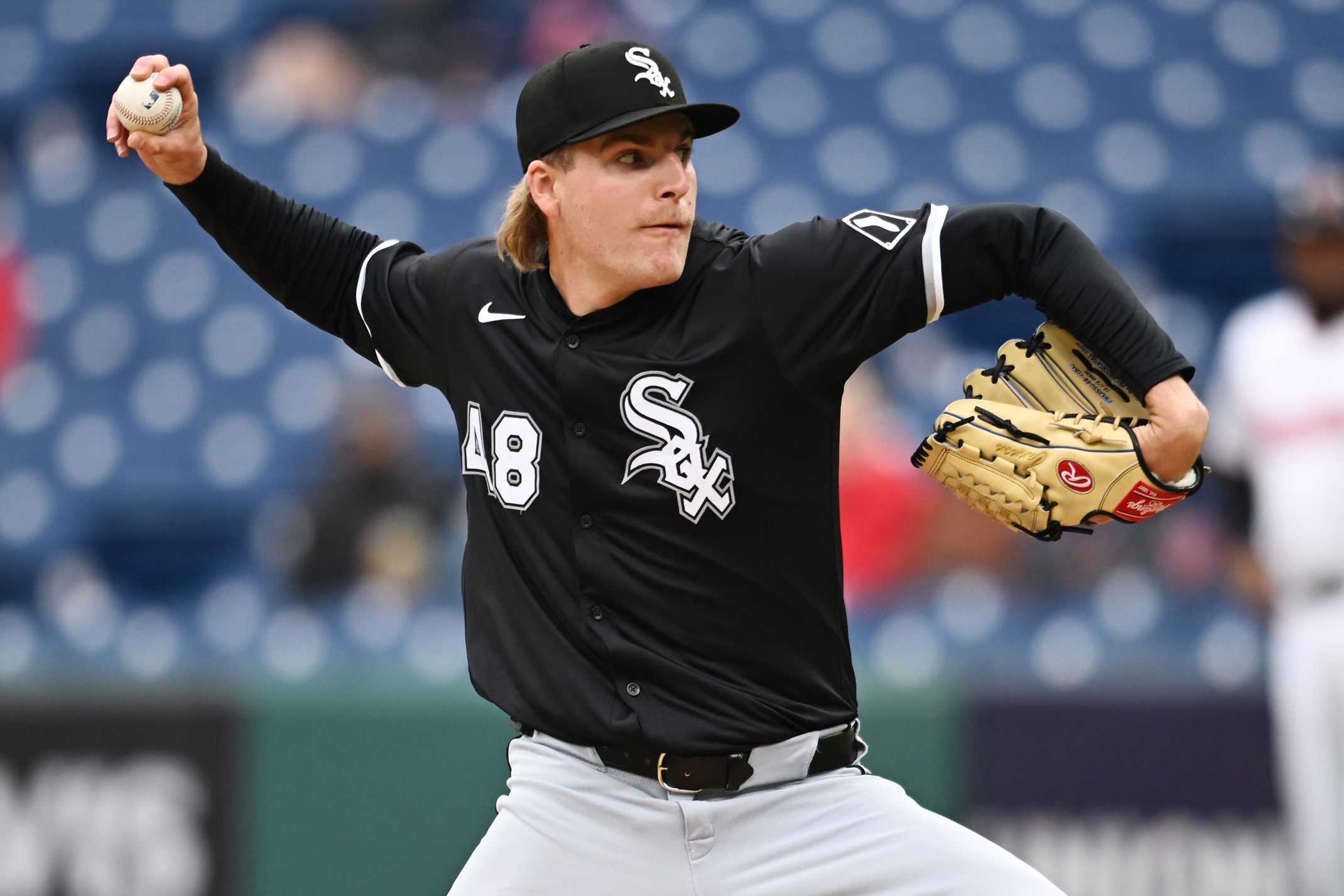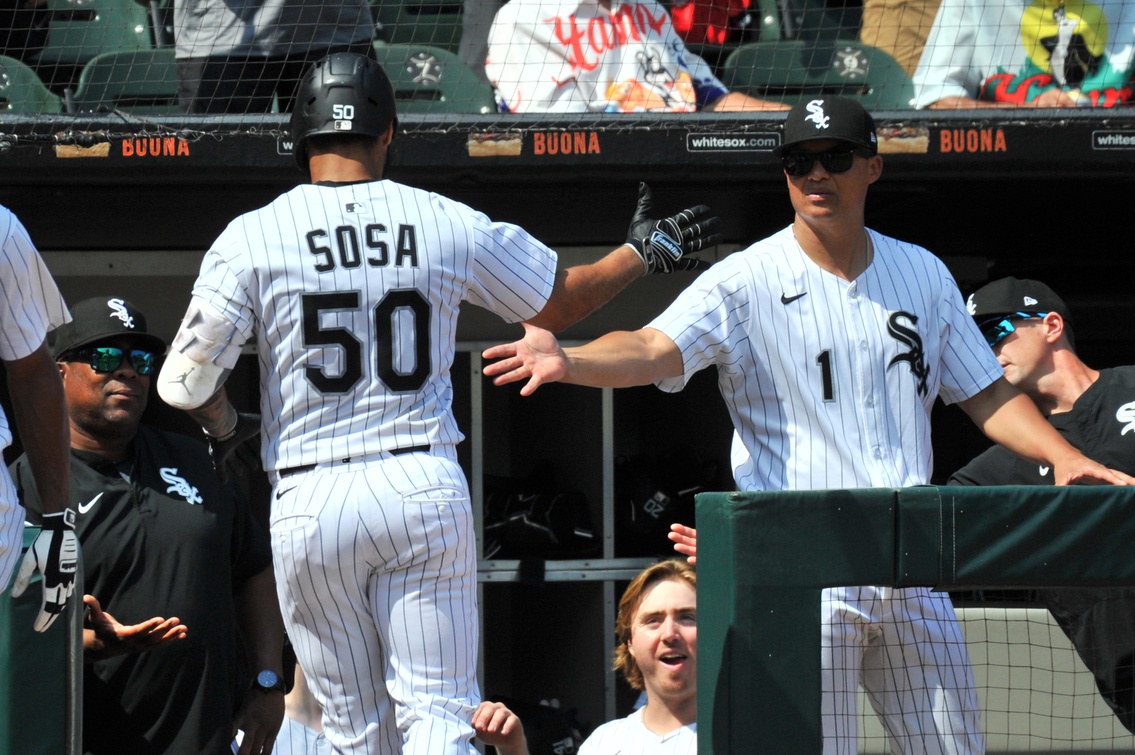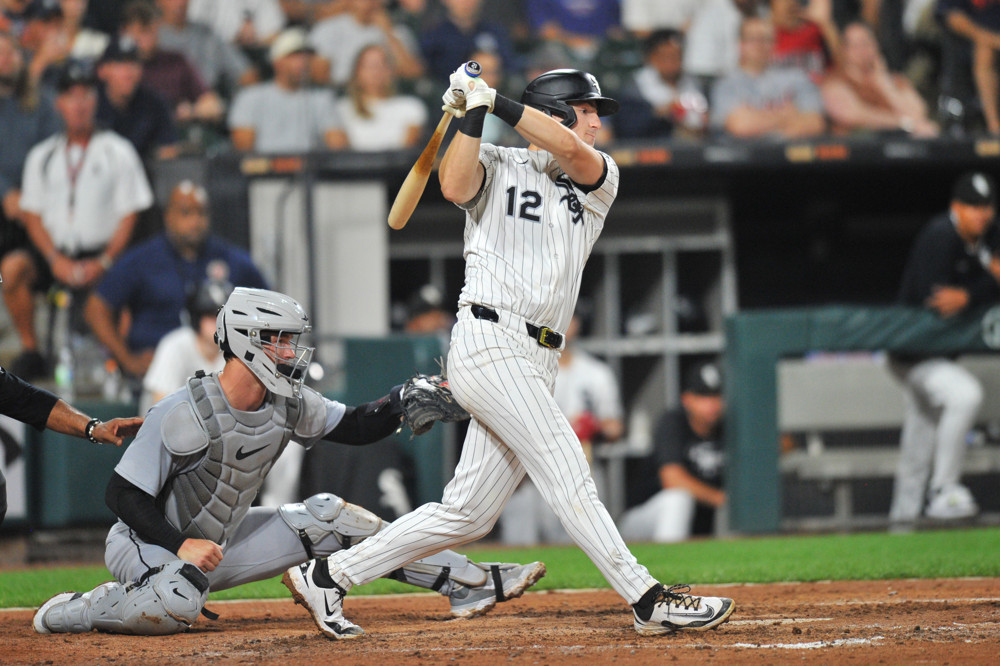As Brian Bannister suggested last week, Jonathan Cannon has indeed switched from a one-seam sinker grip, back to the traditional two-seamer he threw pre-2024, in an effort to restore the groundball rates in the mid-50s that defined his rise through the minors.
That's the digestible pitching takeaway from a season that began with Cannon as a young bright spot in the White Sox rotation, and ended with him spending most of the final two months in Triple-A Charlotte, sitting with a 5.87 big league ERA for the season. But in light of those struggles, boiling things down to a single digestible pitching takeaway is not how Cannon initially handled his demotion.
"When I went down, I probably tried to press the panic button a little bit and change too many things at once," Cannon said.
A funny/infuriating thing about pitching is that almost every change, even a seemingly straightforwardly positive one, potentially offers hidden effects elsewhere. Sean Burke recently learned that working so much in catch play to practice his new sinker had been eating away at the effectiveness of his slider. So when speed-running through every adjustment he thought was valid didn't immediately produce results, Cannon had already ceded his ability to track which tweak had affected what, and "threw myself out of whack."
There's a reason why spring training is so uniquely treasured as an opportunity to work on things and make significant changes. Once the games start, results have a way of taking priority over a patient process.
"When I switched the sinker grip, my first time actually using it was when I got called back up to pitch against Minnesota," Cannon recalled of when he was roughed up for five runs while recording seven outs earlier this month. "It was like, 'Do I use the new one? Do I use the old one?' And I went with the new one and struggled with the command a little bit. It was one thing after the other, trying to change some things, and I think some of the things didn't need to be changed and I maybe got too aggressive with some of the changes. But I think it's been a big fastball command issue."
Cannon's switch to a one-seam grip was part of arsenal overhaul in spring of 2024 that saw him tilt toward an attack predicated on seam effects, which he still feels played a big role in launching him into the majors and giving him a nastier changeup. The spirit of the effort was diving into pitch data for ways to optimize Cannon's stuff, and a sinker that offered an even steeper approach angle over his existing one was part of that push, but the 25-year-old right-hander never saw more whiffs nor grounders as a result.
"It's where the analytics meet the results: the one-seam had better numbers, but the two-seam was getting better results," Cannon said. "They're basically the same pitch, but for whatever reason the hitters see the one-seamer better. It's kind of hard to explain why that is. I don't think even hitters really know why. It almost feels like it moves a little early, and they can see it move sooner and get underneath it."
The two-seamer is anything but foreign to Cannon, and he feels it's a natural mix with the rest of his existing arsenal, so he enters what is now a very crucial offseason with a clear battle plan. Getting to this point was not fun, but with hindsight, Cannon looks at his August demotion and thinks he could have followed two paths.
The first would have been less panicked, and would have seen him make relatively few adjustments, bide his time, and set himself up to be the first man up whenever a new roster need arose. Potentially he would even have some more of the good big league results he's had in the past, but nothing systemic about his game would have gotten addressed. Instead, Cannon feels he tried everything all at once, had an absolutely miserable time, but heads into the winter with a ton of in-game feedback to parse through. It would be easier to distill had he not done it all once, but now he isn't flying blind, and has some satisfaction that he didn't take the easy way out.
"The second half of the season has obviously been very mentally challenging for me," Cannon said. "I feel like I definitely extended my time down [in Charlotte], maybe longer than I would have liked to and it led to some struggles. But I feel like in the long run, it will be very beneficial for me that I tested that out in game action rather than picking it up in the offseason, and going in to spring training not really knowing what the results would be."
⚙️⚙️⚙️
Since suffering a groin strain that knocked him out for a week (but no further), Grant Taylor has struck out 10 of the 19 hitters he's faced over five scoreless appearances, including two punchouts in a cathartic save Friday night. If you argued this was his best work of the season to date, there's not enough time left in the season for him to bother debating it.
"I think it was just getting re-convicted in who I am as a pitcher," Taylor said. "I had some soft contact with some damage immediately following. Once that happens a few outings in a row, you kind of start to search for swing-and-miss. There was a moment where I was like, 'Who cares? I'm just going to go attack and let my stuff play,' and since then it's been pretty good."
Brian Bannister said recently that the Sox had worked to correct some minor issues with Taylor cutting the baseball, which is speaking relatively, since his fastball has natural cut-ride action. Taylor concedes there have been some minor adjustments, but as someone with the absurd gap of a 4.91 ERA and a 1.42 FIP, the rookie's bigger takeaway has been not making an adjustment after every bad result.
"I understood that I was punching out a lot of guys and I wasn't walking many guys, and I was giving up runs but it didn't feel like I was giving up a bunch of damage," Taylor said. "It didn't feel like I was giving up a lot of barrels. It was ... interesting. I feel like as a pitcher and as a position player, all the expected numbers on everything kind of get too in your mind. You can start to have a 'woe is me' moment where it's, 'I should be doing this.' At the end of the day, you still have got to go out there and compete."
And Taylor still feels ready and able to compete. Add the 23-year-old to the list of White Sox employees who are not making any public commitments to what his role will be next year, with Taylor simply saying he expects to talk to the organization about what the 2026 plan will be. But if there were more innings to be had, he feels ready for them.
The 62⅓ frames Taylor has handled this season between Double-A and Chicago are almost equal to all the innings put to his name in the previous three years combined, but he says his arm is fresh.
"I feel great," Taylor said. "I feel amazing. My body feels like the season shouldn't be ending in the next couple of days, which is an exciting thing. Because that means I'd ready to throw in October, and that's everyone's goal."
⚙️⚙️⚙️
White Sox prospect Caleb Bonemer's answer about being named the Carolina League MVP, as well Baseball America's White Sox minor league player of the year, is good encapsulation of the 19-year-old's ambitions.
"It's pretty cool to see that when you put in a lot of work," Bonemer said of seeing 'MVP' by his name. "It's something I've always wanted to do, is play pro ball. So to be able to kind of accomplish some things like that this year, it definitely makes you feel good. But also, I've got to remember that I've got to do it again next year. And it is only Low-A. Not to say it doesn't really matter, but nobody really remembers your Low-A MVP. I just look forward to next year. Hopefully I can put you together another solid year and keep going from there."
Bonemer doesn't turn 20 until for another week, and is fresh off spending some time at the team complex in Arizona for performance camp, before he'll be in Nashville training alongside Colson Montgomery for most of his offseason. For his age, 12 home runs in 476 plate appearances is a solid showing for getting his power into games. If anything, it's encouraging that for a prospect whose pull pop was the selling point on draft night, Bonemer crafted a .281/.401/.473 overall line across two levels with more of a well-rounded attack.
He also cracked seven of his 12 homers over the last two months of the season, which is when Bonemer started taking some shots at the seats when the moment allowed, as a little treat.
"A lot of it was just kind of just understanding timing a little bit better, trying to get the ball a little bit more out front," Bonemer said. "There's certain times when if I got a hanging breaking ball before, I might have kind of taken it because I was full out on the fastball. Instead of just letting it rip, because like, what's the worst thing that could happen? If I swing and miss, so what? But if you connect with one, usually good things happen. So near the end of the year, I tried to focus on getting the ball up front a little bit more and if I saw something hanging, to just go ahead and take a whack at it."






